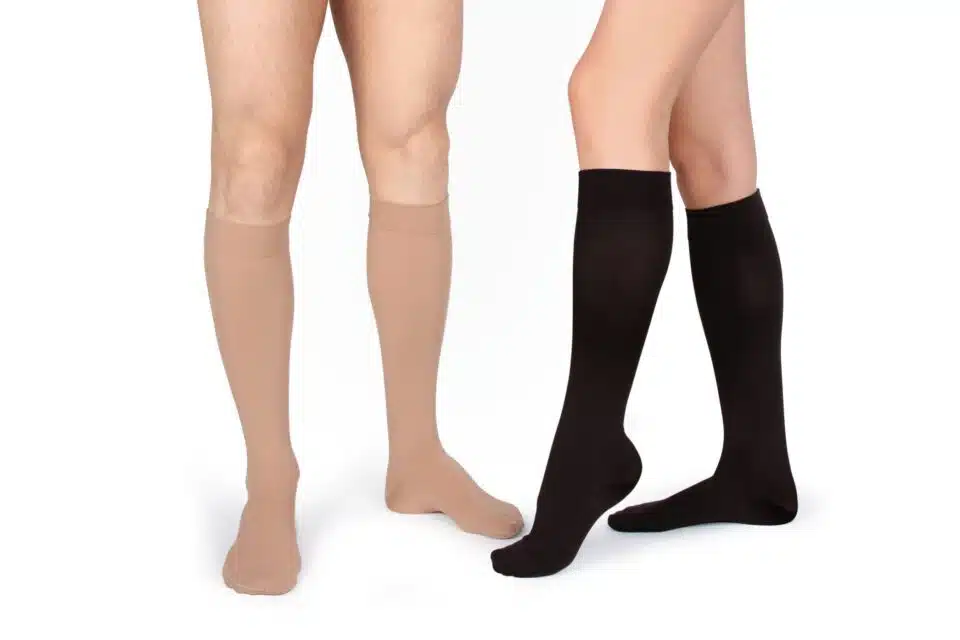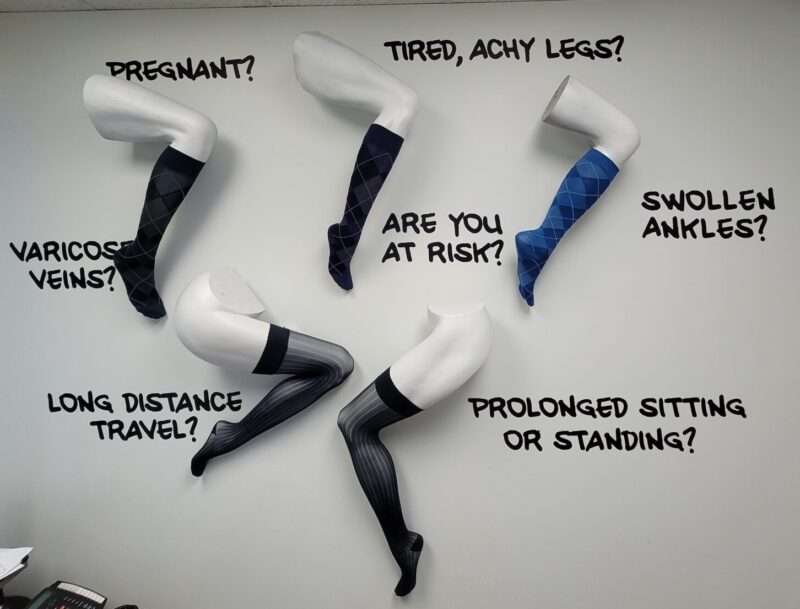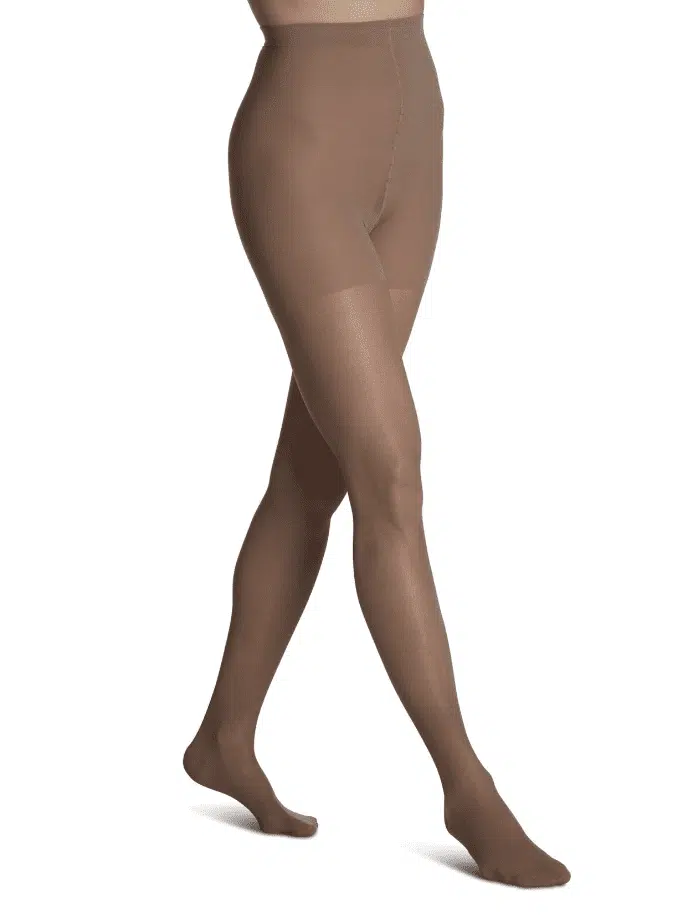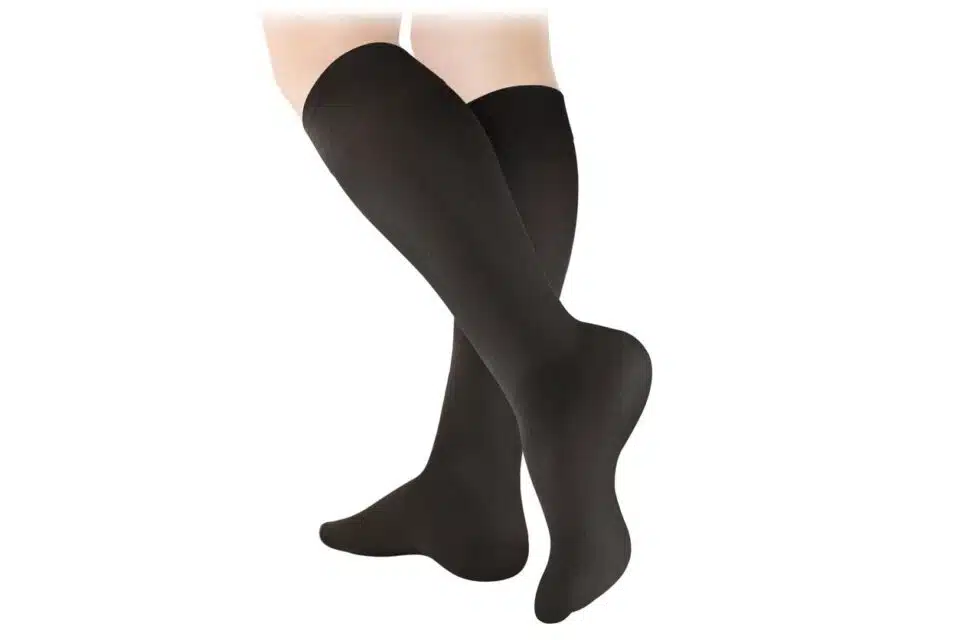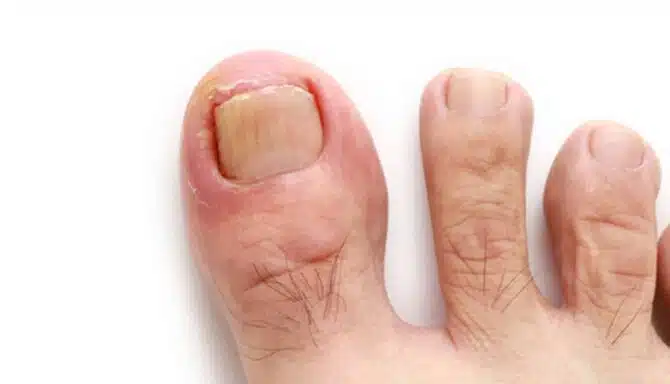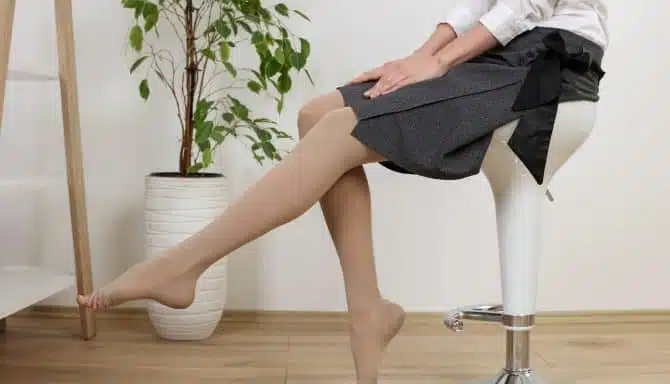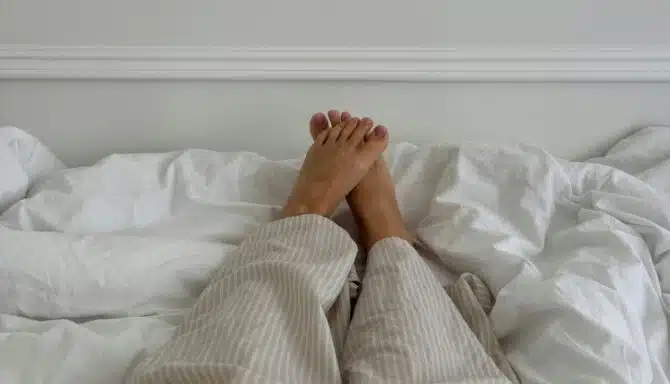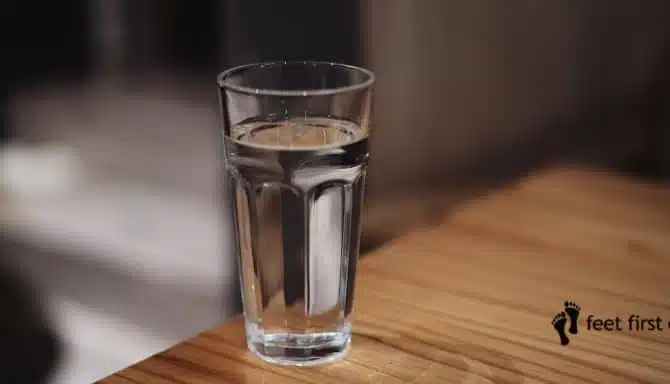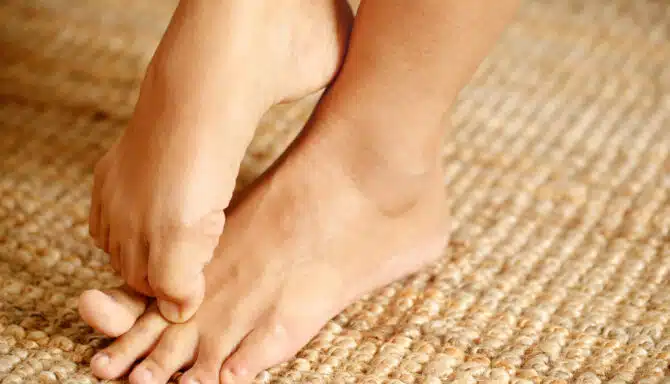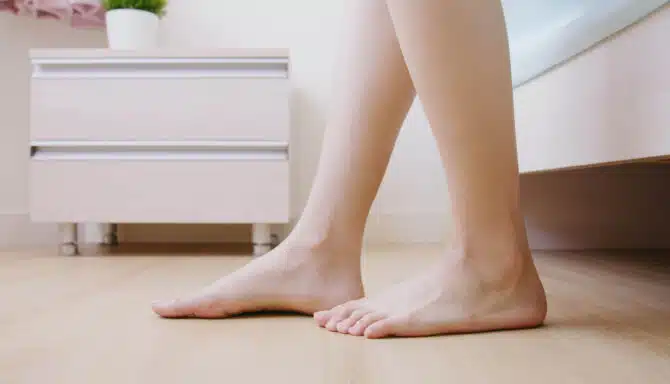It’s easy to forget that leg health is just as important as foot health. In fact, one of the most effective medical devices to target both foot and leg conditions is compression stockings. By gently squeezing your lower extremities, they help you manage aches and swelling and boost blood circulation. Many people can benefit from these special socks for relief for foot and leg problems, but worry about how they look or don’t know how to wear them. Today’s blog will discuss the different types of compression stocks and advise on how to wear them so you make the most of this amazing product!
Different Types of Compression Stockings
Compression gear looks just like standard versions of hosiery and stockings and blends in well with your outfits. Here are some of the most common types:
- Pantyhose
- Maternity stockings
- Knee-high stockings
- Thigh-high stockings
- Open-toe stockings
How to Wear Compression Stockings
While appearing fashionable may be on your mind, Mayo Clinic notes that the most important thing is to wear compression stockings as your health care provider prescribes. This may mean wearing them all day or only in the morning or before bed (do not wear compression stockings when sleeping). Whether you have varicose veins, are pregnant, have edema (swelling), venous insufficiency, or deep vein thrombosis (DVT), the symptoms you struggle with can easily flare up if you neglect to wear them as intended. Improper use can also cause blood clotting or skin irritation.
Putting your compression stockings on and removing them is often the most challenging part of using them. You have to be gentle and take your time when putting them on. Otherwise, it can affect the elasticity and compression levels. Depending on the type, it’s also important to roll the stocking down to the heel, leaving the toe area open before you put them on. In addition, you need to smooth out wrinkles and ensure the stocking fully covers the part of the leg or foot that needs the most compression. Sigvaris, the brand we provide at Feet First Clinic, offers a detailed guide on how to put on your compression stockings and take them off.
Types of Compression Stockings
In addition to the above-noted conditions, compression stockings are recommended for people who stand at work for long periods or who travel on planes often. Your preferences, lifestyle, and specific condition can help your foot clinic choose the right type. Please also note that compression levels range from mild to firm, which are measured in mmHg; the higher the level of mmHg, the greater the benefit. The over-the-counter compression levels (like the ones you’d find at a drug store) range from 8-15 mmHg to 15-20 mmHg. Medical grade levels of compression start at 20-30 mmHg (the most common level of compression) and can go up to 40-50 mmHg. Your health care provider can help determine the level you need.
Pantyhose
Pantyhose compression hosiery is a good choice for women who work long hours, travel frequently, or have varicose veins or other circulatory issues above the knee. They start at the feet and go up to the waist, like standard pantyhose. They apply graduated pressure (like a gentle squeeze) along the leg, becoming less tight as they extend upwards. This stimulates blood flow back to the heart, thereby reducing pain and swelling. Compression pantyhose is available in various shades in sheer or opaque fabric, making them suitable as professional attire.
Maternity Stockings
Stockings for pregnancy-related symptoms are available in pantyhose, knee-high and thigh-high stockings. As hosiery, they can be opaque or sheer and include more wiggle room in the waist and hips to accommodate a growing belly. Pregnant women can also choose cotton and linen knee-high socks for pain and swelling in the lower legs (see below). Maternity stockings help prevent DVT and varicose veins often associated with pregnancy. Moreover, postpartum women may also be at risk of these vein issues and often experience prolonged circulation issues.
Knee-High and Thigh-High Stockings
Knee-high compression stockings provide compression and support to the calf muscles, ankle, and foot and usually resemble regular socks. Thigh-high stockings provide compression and support to the entire leg, from the ankle to the thigh and are generally opaque or sheer. Both come in a variety of materials for your individual needs.
Open-Toe Stockings
Open-toe stockings offer more ventilation than the standard closed-toe version, making them more appealing to wear in the warmer, humid months. They can also be helpful for individuals who have difficulty putting on traditional compression stockings or those who find them uncomfortable. Rest assured, open-toe compression stockings offer the same compression levels, just with the bonus of added breathability. You can also wear sandals with open-toe stockings as they’re more discrete.
